Sailors know to expect surprises — it’s part of the deal, especially after leaving the boat in dry storage for eight or nine months. Still, nothing quite prepares you for discovering noxious black goo dripping into your engine room, corrosion spreading across every engine room surface, a fuel tank corroded through, and months of wrangling with insurance while your boat sits stranded in a Mexican boatyard. This is the story of how my wife and I faced an unexpected cascade of failures aboard our Whitby 42 ketch, Counting Stars — and the lessons we learned along the way.
The First Signs of Trouble
When we returned to Counting Stars in the spring, which had been stored in the boatyard in Puerto Peñasco, our plan was simple: do some routine maintenance and prepare the boat for launching in the fall. But almost immediately, things didn’t feel right. The refrigerator wasn’t cooling, even though the condenser was running. The coolant lines were green and oxidized, which was odd, since we had replaced them before sailing down from Vancouver.
A local refrigeration technician promised to test for leaks, repair them, and recharge the system. Instead, he spent half an hour injecting “stop leak” into the system and topping up the coolant — a $400 USD band-aid. Later, back in Vancouver, our service provider confirmed what many cruisers already know: “stop leak” is a short-term fix at best. Within months, it often means full replacement. That was lesson number one: a quick fix isn’t always a real fix.
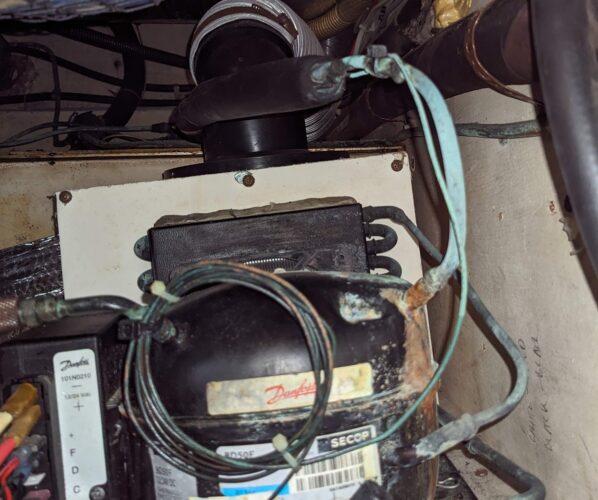
Corrosion in the refrigeration lines.
Wide Spread Corrosion
While tinkering with the refrigeration system in the engine room, we began to notice an unsettling amount of corrosion on nearly every surface. At first it looked minor, confined to a few fittings, but soon we realized it was everywhere: stainless screws, hose clamps, gate valve handles — nothing was spared. Even the prop shaft and the mizzen mast compression post showed the same tell-tale damage.
This was a shock. We were certain none of it had been there before leaving the boat in storage. Curious and more than a little concerned, we asked around the yard if this was just what happened after eight months on the hard. The answer was immediate: no, this was something unique to our boat. Demoralized and worried about what we might uncover next, we set to work with wire brushes and rags, scraping back the layers of corrosion to reveal just how much trouble we were really in.
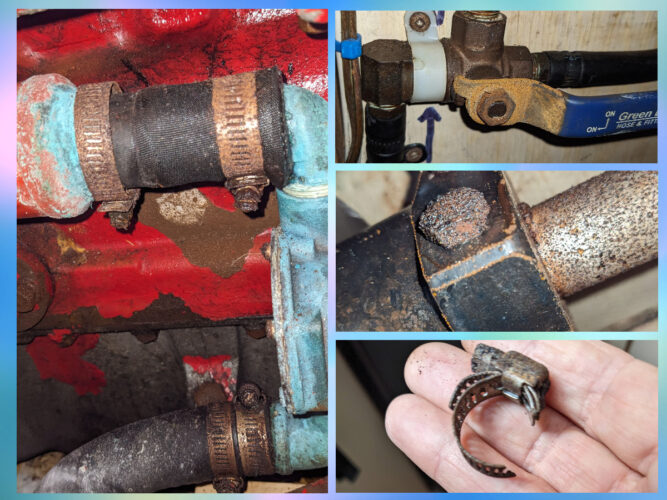
Widespread corrosion.
The Chemical Spill
Then came the real shock. In a cockpit lazarette, my wife found the bottoms of two Cetol cans and a partially full can of Pettit Horizons bottom paint dissolved away, pooling into a noxious black sludge. The culprit: a leaking bottle of On/Off hull cleaner — a potent mix of oxalic, phosphoric, and hydrochloric acids — that split open, likely from heat expansion in the desert sun.
The lazarette had a drain: a plastic thru-hull and hose that led straight into the bilge below the engine room. The plastic thru-hull failed, and the chemical mixture seeped into the surrounding foam and plywood overhead, dripping into the engine space like acid rain.
My wife ended up with a burning throat after briefly inhaling the fumes while cleaning. From then on, she wore a respirator. That was lesson number two: think twice about how (and where) you store chemicals on board. One spill can trigger damage far beyond the locker where it starts.
The Fuel Tank Surprise
After flushing the bilge and scrubbing what we could, we realized the boat wasn’t draining as expected. In the water, the bilge normally drains aft into the sump where the pumps are located, but because the boat was sitting nearly flat on the stands, water was pooling under the engine, directly on top of the fuel tank. While soaking up the water, my wife put her finger straight through the top of the aluminum tank, which also serves as the bilge floor.
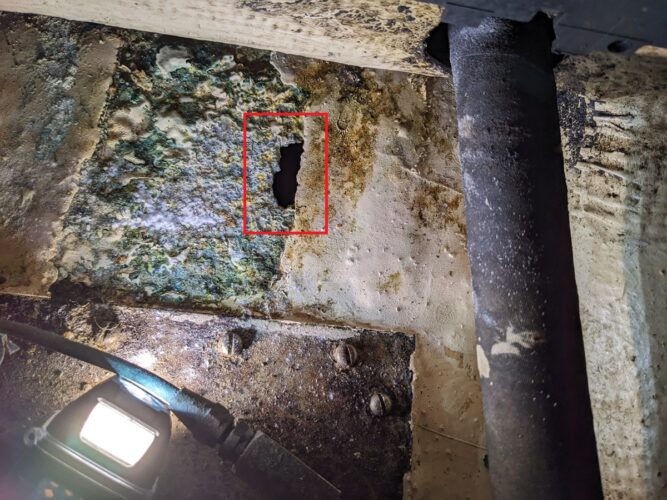
Fuel tank damage.
That was the turning point. The fuel tank, which is glassed into our keel, was corroded beyond repair. Removing it meant pulling the engine and transmission and cutting away the fiberglass engine pan to access it. Replacing or repairing a fuel tank glassed into a keel is no small job. And so began the insurance claim process.
Wrestling with Insurance
The insurance process was almost as draining as the damage itself. It took three months and four different adjusters before we had clarity on coverage. Early on, I found myself re-sending photos, logs, and estimates that had supposedly already been included in the surveyor’s report. At one point, an adjuster suggested the damage might be due to “humidity” or improper layup, so I had to explain, in detail, that Puerto Peñasco is a desert with 353 days of sun a year, that our boat had been carefully covered and ventilated, and that mold was not an issue.
We also had to supply meticulous maintenance logs to prove the boat’s pre-incident condition, along with every estimate and subcontractor scope of work. Emails often went unanswered for weeks, leaving us to manage much of the process ourselves.
Eventually, insurers accepted the claim, subject to the hefty deductible. Lesson number three was clear: document everything, photograph everything, and expect to be patient.
Puerto Peñasco: The Right Yard, the Wrong Yard
Puerto Peñasco has a reputation in the cruiser community. Cabrales Boatyard is one of the few places where yachts can be hauled, but its roots are in building steel shrimp boats, not maintaining cruising sailboats. Skilled labor is limited; jobs that should take two months can easily drag into a year.
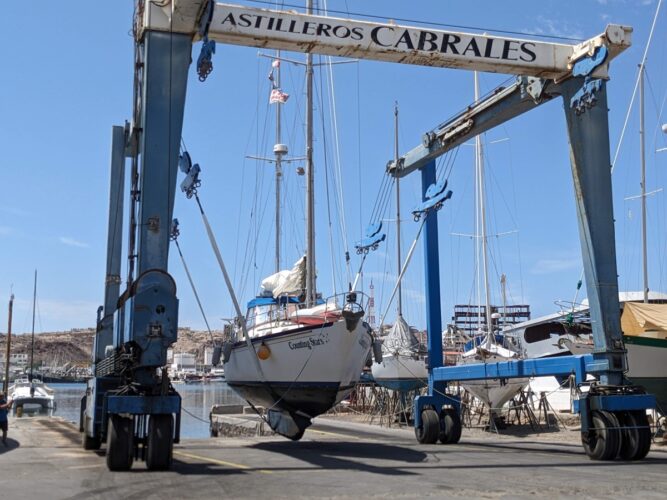
Hauling out Counting Stars at Cabrales Boatyard in Puerto Peñasco.
Fortunately, there are bright spots. A few experienced project managers and specialized contractors in town have earned strong reputations among cruisers for fiberglass and refit work. For mechanical jobs, we found an independent shop that was responsive and professional when others failed to show up. Lesson number four: in remote yards, finding the right people matters more than finding lots of people.
Planning the Rebuild
By late summer, things began moving. The mechanic shop confirmed their quote for engine and transmission removal, service, and reinstallation. An independent contractor, reputable among the cruiser community, provided a project management estimate to coordinate contractors and oversee the work. I created a project plan listing every part and connection likely to be affected, from hydraulic hoses to electrical terminals.
The adjusters pushed for worst-case estimates, wary of costs spiraling past the insured value. We pushed back, emphasizing the need for realism and flexibility as the rebuild proceeded. We also prepared to travel back to Mexico ourselves to supervise, both to save money and to make sure decisions got made in real time. Lesson number five: when the job is big, sometimes you have to be your own yard manager.
Lessons for Fellow Cruisers
Looking back, the experience was exhausting, but also instructive. Here are the takeaways I’d share with anyone cruising or laying up their boat abroad:
- Be careful with chemical storage. Strong cleaners and paints should never be stored where leaks can reach bilges or structural foam.
- Quick fixes can cost more later. The $400 “stop leak” may have been wasted money — and time.
- Know your yard’s strengths and weaknesses. In places like Puerto Peñasco, the right individual contractor is worth more than the yard itself.
- Insurance takes time. Keep meticulous records, and be prepared for a long paper trail.
- Project-manage your own refit. Nobody cares about your boat as much as you do.
Moving Forward
As I write this, Counting Stars is still on the hard in Puerto Peñasco, but progress is underway. The fuel tank will be replaced, the engine serviced, and the corrosion damage repaired. My wife and I will head back to Mexico to pitch in where we can.
Would I wish this process on anyone? Absolutely not. But I hope that by sharing our experience, other cruisers might avoid some of the pitfalls we faced, or at least know they’re not alone when things go wrong far from home.
After all, sailing is about resilience. Boats — and sailors — are built to weather storms. Sometimes those storms just happen to brew in the bilge.
Declaration of AI and AI-assisted technologies: During the preparation of this document, ChatGPT 5.0 was used to create a first draft based on a series of supplied source documents. The author reviewed, edited, and revised the content as needed to ensure accuracy and coherence and takes full responsibility for the final publication.


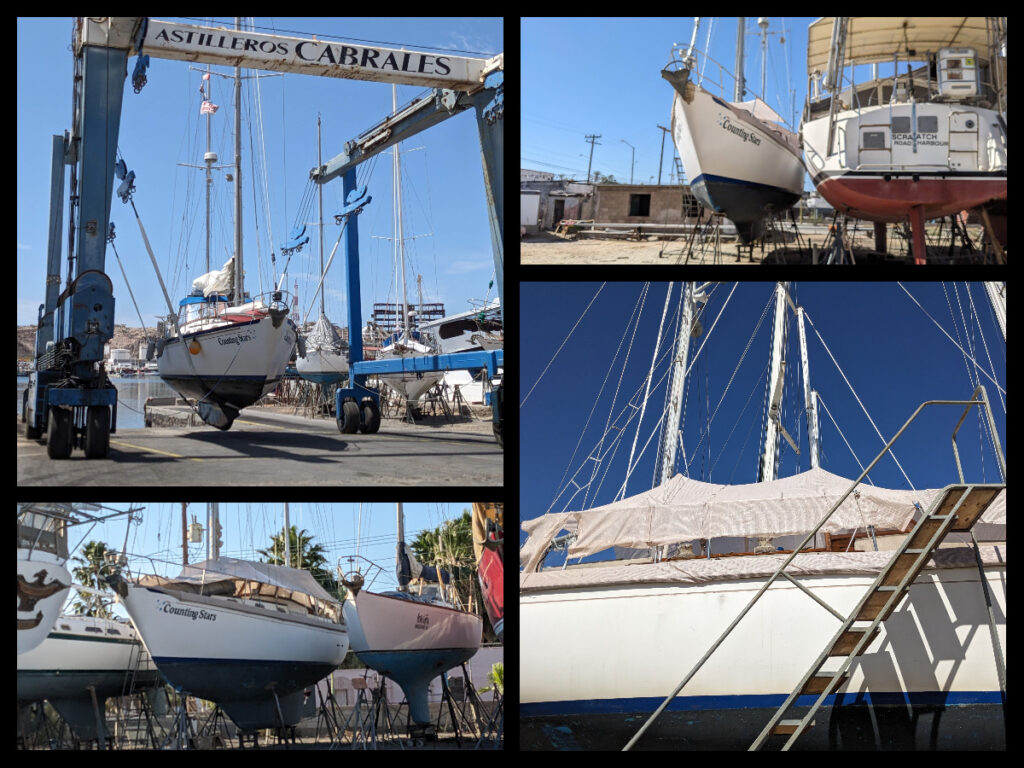




Comments